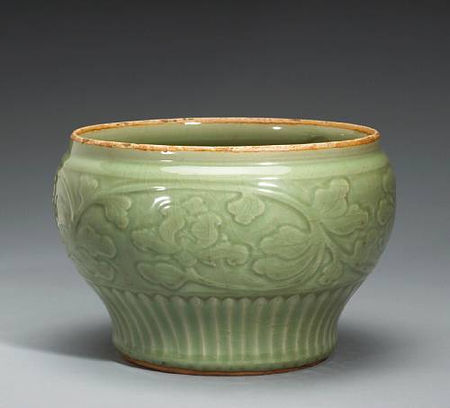Origins: Celadon Glazed Pottery for a Touch of Jade Green
 Celadon pottery is a type of glazed pottery technique that dates back to ancient eastern culture, specifically China where it first began.
Celadon pottery is a type of glazed pottery technique that dates back to ancient eastern culture, specifically China where it first began.
The technique is comprised of using a jade green, transparent glaze on pottery, the finer ones are made of porcelain, and placed in a kiln where sometimes the pottery will have small cracks and imperfections in it. Celadon ware was highly regarded by the Chinese Imperial Court for many centuries replacing the painted pieces.
Creating celadon pottery requires specific rules. The classic production technique requires firing a glaze containing a touch of iron oxide at a high temperature in a kiln that reduces oxygen. The kiln as well as the materials used are very important everything must be refined or the color will be altered completely. The soft and creamy jade green is the traditional color of celadon pottery but many desire the deep blue color that is produced sometimes from too much oxidation.

One of the most well-known kilns, the Longquan Kiln in China, is admired for their beautiful and nearly perfect celadon glaze pottery. Celadon glazes, generally, are transparent glazes sometimes seen with small crackles or cracks. However, the defining characteristic of true celadon ware is the distinct pale green color which lovely complements a variety of interior design settings.

Add a touch of this elegant green pottery to your decorum and watch how it perfectly accents the space without being overbearing. In the form of vases, decorative bowls, sculptures and dishware, it is meant for both display purposes and for functional use.
Absolutely stunning, celadon pottery holds classic style with vivid colors and contemporary capabilities.